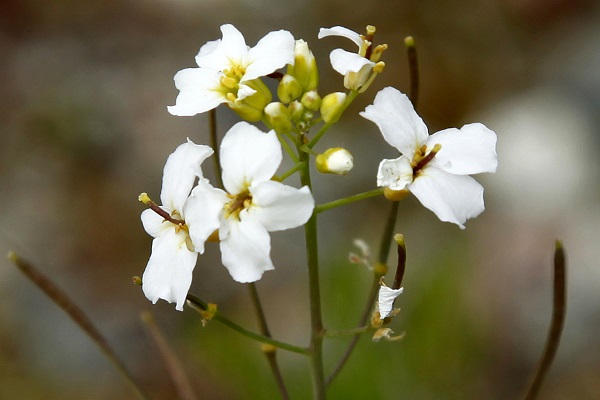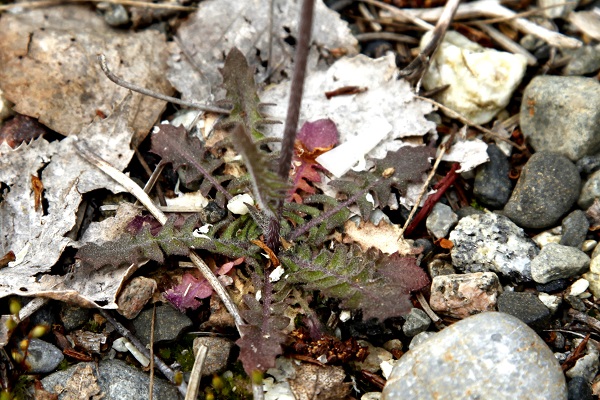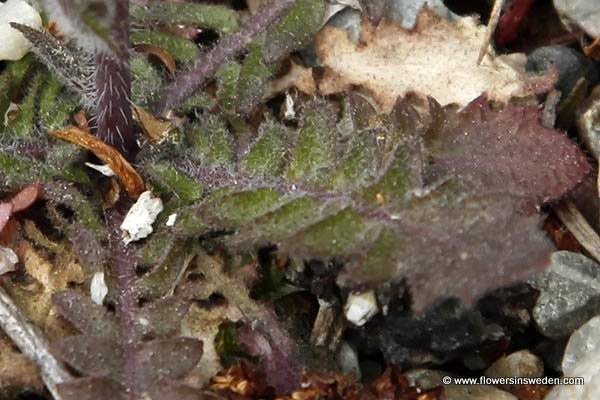Hebrew: תודרנית לבנה, Arabic: رشاد أذن الفأر
| Scientific name: | Arabidopsis thaliana (L.) Heynh. | |
| Synonym name: | Arabis thaliana L., Stenophragma thalianum (L.) Celak. | |
| Common name: | Thale Cress, Mouse-ear cress | |
| Hebrew name: | תודרנית לבנה, Tudranit lewana | |
| Arabic name: | رشاد أذن الفأر | |
| Family: | Brassicaceae / Cruciferae, Cabbage Family, משפחת המצליבים |

|
| Life form: | Annual | |
| Stems: | Height 10–30 cm, erect, slender, usually unbranched, hairy | |
| Leaves: | Basal rosette green to purplish leaves, serrated; stem leaves, unstalked, entire margin; leaves covered with trichomes | |
| Flowers: | White or yellowish flowers arranged in a corymb | |
| Flowering Period: | April, May, June | |
| Fruits: | Pod, 1–1.5 cm long, divided in two by a membranous wall (a siliqua); spreading, curved, and flattened on upper side; Fruit-stalk about half the length of the siliqua, pointing obliquely upwards; Seed yellowish | |
| Habitat: | Batha, Phrygana | |
| Distribution: | Mediterranean Woodlands and Shrublands, Mt. Hermon | |
| Chorotype: | Med-Euro-Siberian | |
| Summer shedding: | Ephemeral |

Derivation of the botanical name: Arabidopsis, arabis, a Greek word used for "mustard" or "cress," and the Greek word for Arabia; resembling Arabis. thaliana, after Johannes Thal (1542 - 1583), who discovered this species in the Harz Mountains and originally called it Pilosella siliquosa. Stenophragma, stenos στενοϛ narrow, straight; phragma, a fence or screen; a narrow fence. The Hebrew name: Tudranit comes to indicate a kind of small tudra (Sisymbrium), although systematically the genus is close to Arabis rather than Sisymbrium.The name "Tudra", as the plant's Hebrew name, was first mentioned in a dictionary for the plants of the Land of Israel published by the Hebrew Language Committee in 1946, where it appears in the pronunciation: "Tudara" which was later renamed "Tudra".

*Pictures taken in Ragunda, Sweden (see: www.flowersinsweden.com/Arabidopsisthaliana_page.htm.) |